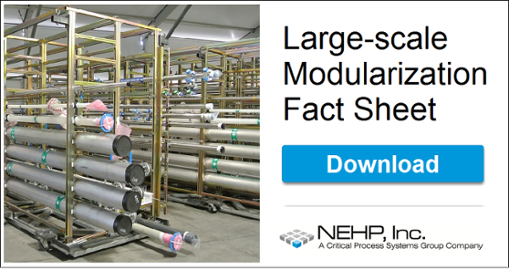Defining and Organizing Construction KPI's
/Project%20management%20with%20gantt%20chart.jpeg?width=300&name=Project%20management%20with%20gantt%20chart.jpeg) When it comes to project management, the construction industry is perhaps one of the most logistically complex and unique industries there is.
When it comes to project management, the construction industry is perhaps one of the most logistically complex and unique industries there is.
Within a single construction project there can be multiple timelines, budgets, interests and vendors - and there's often a multitude of different contractors working on any number of punch-list items in any given area. While this hustle and bustle may seem efficient and productive on the surface, it can also be the source of miscommunication, confusion and lost assets.
These issues can arise if the parties involved are not well aligned and/or if management lacks the ability to track, analyze, and organize project data in meaningful ways. This is where Key Performance Indicators (KPI’s) can really change the dynamics of a project. KPI’s can track and report on just about any activity within a construction process and they can be developed from just about any metric that may be considered indicative of progress.
There are two primary categories of KPI, those that report on past activity and those that look ahead.
Historic KPI’s measure and analyze data about the way in which money, assets and people are being used on a construction project. These KPI’s are often plotted on easy to read charts or graphs, allowing owners and management the opportunity to view what has transpired. Since historic KPI’s take a past look at what has happened during the construction process, there also needs to be forward-looking metrics which can give decision makers the ability to make proactive (vs reactive) decisions to increase productivity and decrease costs.
Predictive KPI’s use leading indicators to make projections about performance into the future. These can be used to guide decisions which influence the outcome of existing projects, future projects, or even model trends in the industry as a whole. Useful data for generating predictive KPI’s may include bid activity, cash flow, bills, and even purchase orders. [1]
Ultimately, every construction firm is unique and therefore it is important to develop and use KPI's that are most meaningful to the organization. It's also important to recognize at which point too many KPI’s might have a diminishing or detrimental effect.
/Financial%20paper%20charts%20and%20graphs%20on%20the%20table.jpeg?width=324&name=Financial%20paper%20charts%20and%20graphs%20on%20the%20table.jpeg)
By using more KPI's than is necessary, owners and managers alike can become mired in data analysis and may find it difficult to reach agreement about which aspects of the project to alter in order to improve productivity.
With that in mind, if you are having difficulty deciding on which metrics to follow, it can be helpful to organize your options into the following KPI types:
Cash Management KPI's - Cash management KPI's can compile all income and expense statements, invoices, and balances into a single dashboard display. This is a first step toward helping project managers/owners determine the financial stability of the program and can help identify what steps need to be taken in order to meet financial obligations.
While cash flow awareness is a strong starting point, it's also important to match this data with what's happening on the ground and in the field.
Project Management KPI's - Project management and project tracking KPI's can be used to gauge specific activities, deadlines, workflows, schedules, departments and/or individuals within a construction project. This can be a vital tool to ensure that the project is on-course and that there are no costly oversights.
Through a thoughtful combination of project management and cash management KPI's, savvy firms can keep tabs on bills and revenue while categorizing items under their most relevant activities. This allows owners to view costs against which tasks have been completed, how long they took to complete, the time each employee spent doing certain tasks, and (with proper adjustment) can even be used to forecast end results.
Now that we have a basic introduction to KPI types, we will continue in Part 2 of this series with a simple example of construction KPI's in action. Click here to continue to Part 2 of our series.
If you would like more information about how we can help you with construction productivity improvement, please feel free to access our large-scale modularization fact sheet below:
OR
Visit Our Lean Construction Integration Page Here
[1] Acumatica Whitepaper, "Key Performance Indicators for Construction" (2018), p. 3, available at https://www.acumatica.com/kpi-for-construction/
